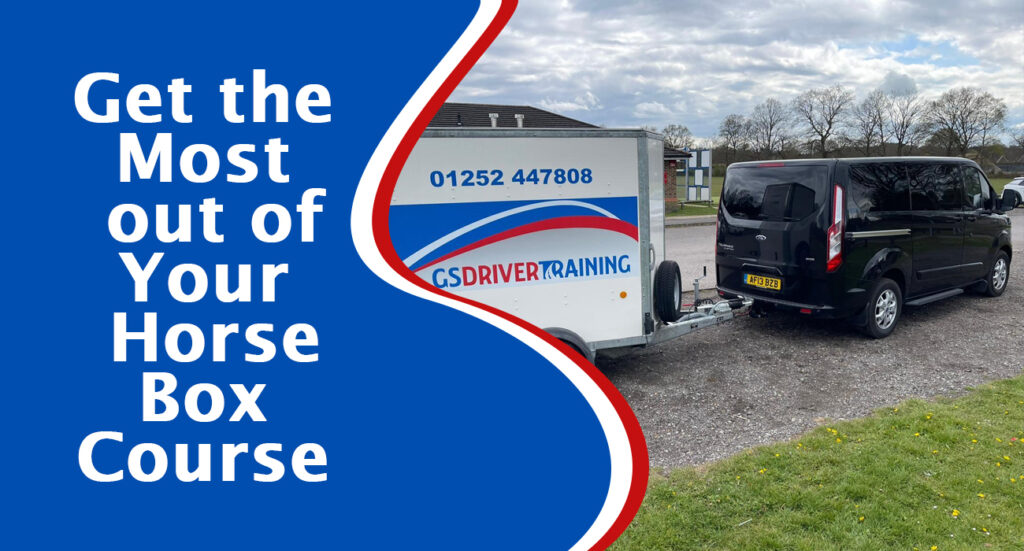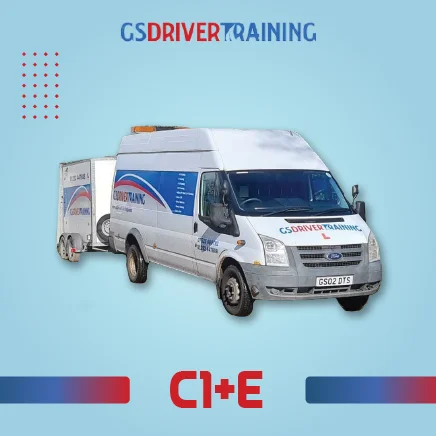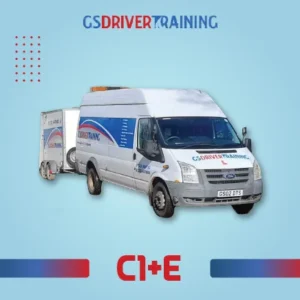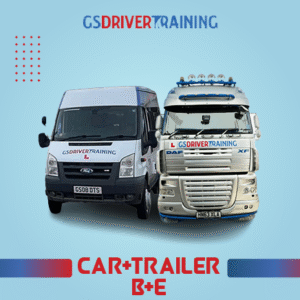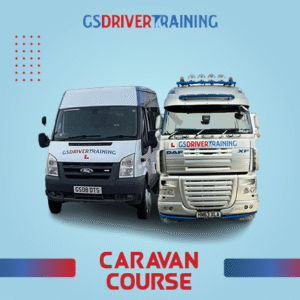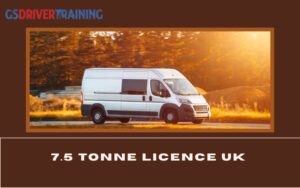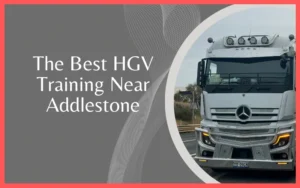Get the Most out of Your Horse Box Course
To get the most out of your Horse Box course and become a skilled and confident horsebox driver, you should follow a structured approach and consider various aspects of safe and efficient horsebox handling. Here’s a guide to help you maximize your learning experience:
Please familiarise yourself with the specific details of your Horse Box course, including its duration, curriculum, and any prerequisites. Brush up on your general driving skills by reviewing road rules, traffic signs, and defensive driving techniques. Ensure you have suitable clothing and footwear for the course. Comfortable and appropriate attire will enhance your learning experience. Practice driving the horsebox under the guidance of your instructor. Focus on manoeuvring, parking, and driving safely with live cargo (horses) on board. Emphasize safety protocols, including securing the horses properly, checking the horsebox’s condition, and maintaining proper ventilation. Familiarise yourself with essential horsebox maintenance and repairs. Understanding the vehicle’s mechanics can be valuable in case of breakdowns.
Feel free to ask your instructor questions if you need clarification on anything. They are there to help you learn and improve your skills. Practice driving the horsebox in various weather and road conditions to build versatility and adaptability whenever possible. Keep a notebook to jot down key points, tips, and reminders from your instructor. Revisit course materials, handouts, and any reading materials provided by the course organisers to reinforce your learning.
Participate in mock tests or assessments to gauge your progress and identify improvement areas. Ensure you understand and adhere to all legal requirements and regulations related to horsebox driving, including weight limits and license requirements. Keep informed about any updates or changes in horsebox regulations and safety guidelines. Building confidence takes time. Gradually increase your level of complexity in driving situations as you become more comfortable with the horsebox. After completing the course, take some time to reflect on what you’ve learned and consider any areas where you may want to improve your skills further.
Remember that becoming a skilled horsebox driver takes practice and ongoing learning. Take your time with the process, and prioritise the safety and well-being of your horses at all times.
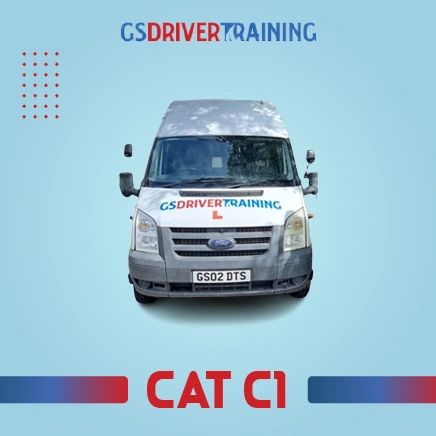
Where can I get my Horse box Licences?
You should contact your country’s relevant licensing authority or agency to obtain a horsebox license or the appropriate driving license for towing and operating a horsebox. The process and requirements for obtaining a horsebox license may vary depending on your location. Below, I’ll provide general guidance on where to start. Contact your local government or transportation authority responsible for issuing driving licenses.
For example, this authority is the DVLA (Driver and Vehicle Licensing Agency) in the United Kingdom. Determine which license category you need based on the size and weight of your horsebox. In many countries, different license categories exist for various types of vehicles. For horseboxes, you may need a specific category that allows you to tow a trailer or operate a vehicle of a certain weight.
C1+E
Review the eligibility criteria and requirements for obtaining the required license category. Requirements may include age restrictions, medical examinations, and passing written and practical tests. Depending on your experience and the license category you’re pursuing, you may need to complete driver training or a towing course.
These courses provide essential knowledge and skills for safe horsebox operation. Prepare for and pass any required theory tests related to the license category. These tests typically cover road rules, vehicle handling, and safety regulations. Undergo practical driving tests that assess your ability to operate a vehicle, including towing a horsebox safely and effectively. Be prepared to demonstrate proper loading, securing, and towing practices.
- After completing all necessary tests and training:
- Apply for the horsebox license or the relevant license category.
- Pay any associated fees.
- Be aware of the renewal requirements for your license category, as licenses often have expiration dates.
- Ensure that you meet any continuing education or retesting requirements as necessary. If you have questions or require assistance throughout the process, contact the licensing authority or seek guidance from a reputable driving school that specialises in commercial or specialized vehicle licenses.
- Consider the specific regulations and guidelines applicable in your country or region, as the process can vary considerably.
- Adhere to all legal requirements and safety standards when operating a horsebox to ensure your horses’ well-being and safety on the road.
What is a Horse Box?
A horsebox, a trailer or transporter, is a specialized vehicle designed to transport horses safely and comfortably. It is a mobile enclosure for horses that allows them to be transported from one location to another, typically for various equestrian activities, such as competitions, shows, leisure rides, or relocation.
Key features of a horsebox include:
The primary area of a horsebox is a stable compartment designed to house one or more horses during transport. This compartment is often padded and equipped with hay nets and tie rings to keep the horses comfortable and secure. Horseboxes usually have a ramp or a loading door at the rear or side, allowing horses to enter and exit the vehicle. Adequate ventilation ensures that horses can access fresh air during transport. Many horseboxes have windows, vents, and roof openings for proper ventilation. Horseboxes are equipped with tie-downs and dividers to secure each horse, preventing them from moving around during transit.
Some horseboxes have additional storage compartments for carrying equestrian gear, feed, and other equipment. Safety features like anti-slip flooring, padded walls, and reinforced structures are standard in well-designed horseboxes to minimize the risk of horse injury during transport. Horseboxes can be towed by a separate vehicle (trailer) or be self-propelled, meaning they have their engine and can be driven independently.
Horseboxes come in various sizes and configurations to accommodate different numbers of horses, from single-horse trailers to larger transporters that can carry multiple horses. The choice of a horsebox depends on the owner’s specific needs and the number of horses they intend to transport.
Horsebox owners and operators must adhere to local regulations and safety standards to ensure the well-being and safety of the horses during transport. Proper maintenance and regular safety checks are also essential to keep the horsebox in good working condition.
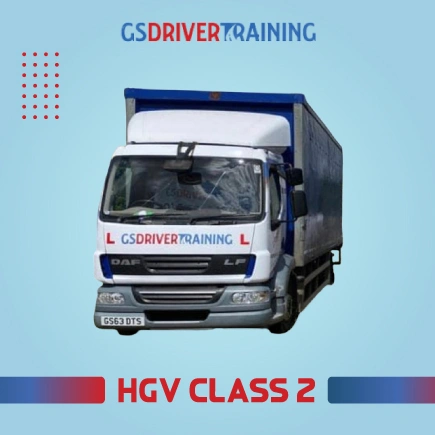
Benefits of Taking a Horse Box Course
A horsebox course offers several benefits, primarily if you regularly transport horses. Here are some of the advantages of enrolling in a horsebox course:
One of the primary benefits of a horsebox course is learning how to transport horses safely. You’ll learn about proper horse handling, loading and unloading procedures, securing horses during transit, and ensuring their well-being throughout the journey. This reduces the risk of accidents and injuries to both horses and handlers. Horsebox courses typically cover legal requirements and regulations related to horse transportation, including weight limits, licensing, and documentation. Ensuring compliance with these regulations is essential to avoid fines and legal issues.
The course provides hands-on training that helps you develop the skills needed to operate a horsebox effectively. This includes manoeuvring, parking, and driving with live cargo (horses) on board. Handling a horsebox can be challenging, especially for those new to it. A horsebox course allows you to build confidence in your abilities, reducing stress and anxiety associated with horse transportation. Learning proper techniques for loading and unloading horses can significantly improve efficiency, making the process quicker and less stressful for both the horses and handlers.
The course often covers handling emergencies and unexpected situations during transit, such as breakdowns, accidents, or horse-related issues. This knowledge can be invaluable in critical situations. Courses often include information on horse behaviour and psychology during transportation.
Understanding how horses react to different situations can help ensure their comfort and well-being. You’ll learn about essential maintenance and safety checks for the horsebox. Regular maintenance can prevent breakdowns and ensure the vehicle is in good working condition. Proper training can help you avoid costly mistakes and accidents that may damage the horsebox, horses, or other vehicles. It can also reduce the risk of insurance claims, potentially lowering insurance costs.
Completing a horsebox course demonstrates your commitment to professionalism and the safety of the horses you transport. It can enhance your reputation as a responsible horse handler and transporter. During the course, you may have the opportunity to connect with other horse enthusiasts and professionals in the industry, opening doors to valuable connections and opportunities. Knowing that you have received proper training and have the necessary skills to transport horses safely can provide peace of mind for both you and the horse owners.
A horsebox course is a responsible and practical step for anyone transporting horses. It ensures the safety and well-being of the horses and helps you become a more knowledgeable and skilled horsebox operator.
Learn the Basics of Horse Box Towing
To learn the basics of horsebox towing, you’ll want to enrol in a suitable course that provides training in towing horseboxes safely and effectively. Here are some steps to help you identify and select an appropriate course: car and trailer driving test
Research online to find courses or training programs that offer horsebox towing instruction. Use search engines and equestrian websites to identify potential options. Reach out to equestrian organizations or clubs in your region. They may have recommendations for reputable training providers that specialise in horsebox towing. Contact local driving schools, or driver training centres that offer towing courses. Inquire whether they provide horsebox towing training or can recommend a specialized provider.
Seek recommendations from fellow horse enthusiasts, trainers, or stable owners who may have experience with horsebox towing courses. Personal recommendations can be valuable. Once you identify potential routes, review their course content and syllabus. Ensure the course covers essential topics, including safety, towing equipment, hitching and unhitching, and driving techniques specific to towing horseboxes.
Verify the qualifications and experience of the course instructors. Look for instructors with expertise in towing horseboxes and a solid understanding of equestrian transportation needs. Consider the location of the course and its availability. Ensure that it fits your schedule and is accessible for you to attend. Look for student reviews and testimonials from individuals who have taken the course. Positive feedback from previous participants can indicate the quality of the training.
Compare the costs and fees associated with different courses. Consider your budget and whether the system offers good value for the knowledge and skills you’ll gain. Contact the course provider and ask any questions about the curriculum, equipment used, class size, and any prerequisites for enrolment. Visit the training facility or attend an open house to get a feel for the course environment and meet the instructors. Once you’ve identified a suitable course that meets your criteria, book your spot and prepare for the training.
Remember that learning to tow a horsebox safely is crucial for the well-being of your horses and for ensuring your safety on the road. Take your time to research and choose a course that aligns with your needs and goals as a horsebox operator.
Gain Practical Experience with Horse Box Driving
Gaining practical experience with horsebox driving is essential for becoming a skilled and confident horsebox operator. Here are some steps to help you gain valuable experience:
If you haven’t already, consider enrolling in a horsebox towing course. Such courses provide valuable theoretical and practical training on safe towing practices. They often include hands-on driving instruction. Before loading horses:
- Practice driving with an empty horsebox to become familiar with its handling characteristics.
- Start in a safe, open area like an empty parking lot to practice basic manoeuvres.
- Master the process of hitching and unhitching the horsebox. This includes correctly attaching the trailer to your towing vehicle and disconnecting it safely.
- Conduct simulated loading and unloading exercises with the horsebox.
- Use life-sized dummies or weighted objects to mimic the weight and behaviour of horses.
This helps you practice the process without the live animals. Start with short trips to get used to driving with the horsebox. Begin by driving on familiar roads and gradually extend your journeys as you become more comfortable. Practice various manoeuvres, such as turning, reversing, and parking with the horsebox.
These skills are crucial for safely navigating tight spaces. Once you’ve gained confidence in handling the horsebox, load and transport horses under the supervision of an experienced horse handler or trainer, you can observe their interactions during transport and receive guidance. Perform regular maintenance on both your towing vehicle and the horsebox. Ensure that brakes, tires, lights, and other components work well.
Gradually increase the complexity of your trips. Start with short, local journeys and then move on to longer distances and potentially more challenging routes. Be prepared for emergencies by undergoing training to handle horse-related issues during transport. Learn how to evacuate horses if necessary safely. Keep a log of your journeys, noting any observations about the behaviour and well-being of the horses during transit.
This can help you make improvements over time. Feel free to seek feedback from experienced horse owners, handlers, or trainers. They can provide valuable insights and tips based on their experience. Stay informed about any updates in horsebox driving regulations and safety guidelines. Comply with all legal requirements. Join local equestrian communities or clubs. Participating in events or gatherings can provide opportunities to learn from others and gain practical experience.
Remember that practical experience takes time to develop. Be patient with yourself and prioritise the safety and well-being of the horses during every journey. Over time, with consistent practice and a commitment to safe practices, you’ll become a proficient horsebox driver.
Conclusion on Horse Box Training
In conclusion, horse box training is an essential and responsible step for individuals involved in transporting horses. Whether you’re a horse owner, equestrian enthusiast, or professional horse transporter, gaining the knowledge and skills is paramount for safe and effective horsebox operation. Here are key takeaways from horse box training:
The primary focus of horse box training is safety—ensuring the well-being of the horses and the safety of both the animals and the handlers during transit. Training covers the legal requirements and regulations related to horse transportation, including licensing, weight limits, and documentation. Adhering to these regulations is crucial. Horsebox training provides practical skills, including loading, securing horses, towing, and manoeuvring. These skills are essential for confident and competent horsebox operation.
Training helps build confidence in handling and driving horseboxes, reducing stress and anxiety associated with transportation. Courses often include instruction on handling emergencies and unexpected situations during transit, ensuring drivers are prepared to respond effectively. Training may cover horse behaviour and psychology during transportation, enabling handlers to ensure the comfort and well-being of the animals. Proper maintenance and safety checks of the horsebox are emphasised to prevent breakdowns and ensure the vehicle is in good working condition.
Completing horse box training demonstrates professionalism and commitment to safety, enhancing the reputation of individuals involved in horse transportation. Training may provide opportunities to connect with fellow horse enthusiasts and professionals in the industry, fostering valuable connections and opportunities. Horsebox training is often just the beginning. Continued learning and experience are essential for becoming a proficient and responsible horsebox operator.
Remember that the safety and well-being of the horses should always be the top priority when transporting them in a horsebox. By investing in training, you contribute to the welfare of the animals and the safety of all road users, making horse transportation a positive and responsible endeavour.
Benefits of Horse Box Lessons
Horsebox lessons, which typically involve training for safely loading, transporting, and unloading horses in horseboxes or trailers, offer several benefits to both horse owners and handlers. Here are some of the advantages:
Learning to load and secure horses in a horsebox properly ensures their safety during transit. This reduces the risk of injuries to the horses and handlers and minimises the likelihood of accidents on the road. Horsebox lessons often include information about horse transportation’s legal requirements and regulations. Understanding and complying with these regulations can help avoid legal issues and fines. Horsebox lessons provide hands-on training, allowing you to develop the necessary skills for adequate horse transportation. This includes manoeuvring, parking, and driving with a live cargo on board.
Handling a horsebox can be intimidating, especially for those new to it. Horsebox lessons help build confidence in your abilities, reducing stress and anxiety associated with horse transportation. Learning proper techniques for loading and unloading horses can significantly improve efficiency, making the process quicker and less stressful for both the horses and handlers. Lessons often cover handling emergencies and unexpected situations during transit, such as breakdowns, accidents, or horse-related issues.
This knowledge can be invaluable in critical cases. Courses may include information on horse behaviour and psychology during transportation. Understanding how horses react to different situations can help ensure their comfort and well-being. You may learn about essential maintenance and safety checks for the horsebox. Regular maintenance can prevent breakdowns and ensure the vehicle is in good working condition. Proper training can help you avoid costly mistakes and accidents that may damage the horsebox, horses, or other vehicles. It can also reduce the risk of insurance claims, potentially lowering insurance costs.
Completing horse box lessons demonstrates your commitment to professionalism and the safety of the horses you transport. It can enhance your reputation as a responsible horse handler and transporter. During lessons, you may have the opportunity to connect with other horse enthusiasts and professionals in the industry, opening doors to valuable connections and opportunities. Knowing that you have received proper training and have the necessary skills to transport horses safely can provide peace of mind for both you and the horse owners.
Overall, horse box lessons are a responsible and practical step for anyone transporting horses. They ensure the safety and well-being of the horses and help you become a more knowledgeable and skilled horsebox operator.
Final Reminders on Horse Box Driving
Before every journey, thoroughly check your horsebox for any issues, such as loose bolts, faulty lights, or tire pressure. Ensuring your vehicle is in good condition is crucial for safe transportation. When loading your horses, maintain a calm and patient demeanour. Avoid rushing them onto the horsebox, as this can lead to anxiety and injuries. Use proper loading techniques and secure them safely. Ensure that the horsebox is well-ventilated during the journey. Adequate airflow helps keep the horses comfortable and prevents overheating. Drive smoothly and avoid sudden accelerations, sharp turns, and abrupt stops. These actions can stress the horses and potentially cause injury. Be mindful of the temperature inside the horsebox.
In hot weather, prevent overheating by using fans and providing water. In cold weather, ensure the horsebox is adequately insulated. Plan regular stops during long journeys to allow the horses to rest, stretch, and access water and hay. This is essential for their comfort and well-being. Carry crucial emergency equipment, such as a first aid kit for horses and humans, tools for minor repairs, and contact information for veterinarians and breakdown services.
Ensure that you have the appropriate driving license for the size and weight of your horsebox. Comply with any legal requirements and weight limits. Regularly inspect and maintain your horsebox’s tires. Proper tire pressure and tread depth are crucial for safe driving. Double-check that all doors, partitions, and gates inside the horsebox are securely fastened before and during the journey to prevent accidents.
Keep yourself informed about road and weather conditions along your route. Plan alternative routes if needed to avoid road closures or traffic congestion. Be an attentive and defensive driver. Stay alert, obey speed limits, and maintain a safe following distance from other vehicles.
Maintain a log of your journeys, including travel times, rest stops, and observations about your horses’ behaviour during transit. This information can be valuable for future trips. Develop an emergency response plan in case of accidents or breakdowns. Ensure you know how to evacuate horses from the horsebox, if necessary, safely. If you’re new to horsebox driving or have doubts about handling a particular situation, seek guidance or assistance from experienced horsebox drivers or trainers.
Remember that the safety and well-being of your horses are your top priorities when driving a horsebox. Following these reminders and taking a cautious and responsible approach to transportation will help ensure a successful and safe journey for you and your equine companions.
FAQ
What is a Small Horseboxes?
Small horseboxes are compact vehicles designed for transporting a limited number of horses, often one or two. They are a popular choice for individuals who own a small number of horses and need a convenient and cost-effective means of transportation.
What are Bloomfields Horseboxes?
Bloomfields is a well-known manufacturer of horseboxes specializing in luxury horse transport. They offer a range of horseboxes, including small to large models, known for their quality, craftsmanship, and attention to detail.
What is Horsebox Driver Training?
Horsebox driver training is essential for individuals who plan to transport horses, as it ensures the safety of both the horses and the driver. Training covers various aspects, including safe loading and unloading, driving techniques, and emergency procedures.
What is a Horse Trailer?
Horseboxes and horse trailers are two standard methods of transporting horses. Horseboxes are self-contained vehicles with a stable compartment, while trailers are towed by another vehicle. Both have advantages, and the choice depends on individual preferences and needs. Horseboxes and trailers are used to transport horses safely around the country.
Where can I get Horseboxes for Sale?
Various options are available if you’re in the market for a horsebox. You can find horseboxes for sale from manufacturers, dealerships, private sellers, and online marketplaces. It’s essential to consider your specific requirements when choosing a horsebox.
What is Horses in Horseboxes?
The safe transportation of horses is a priority for horse owners and handlers. Following proper procedures to ensure their comfort and safety during transit is crucial when loading horses into horseboxes. This includes securing them correctly and providing adequate ventilation.
Also Read: Best HGV Training at GS Driver Training

